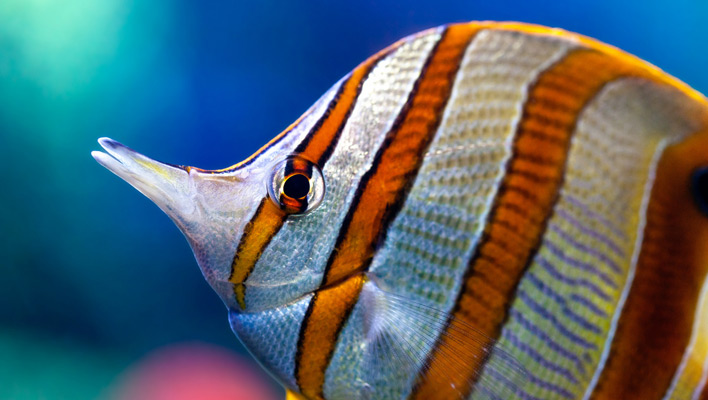This question usually arises when a marine aquarium hobbyist is either preparing to depart for vacation or trying to coax a hunger-striking new fish to eat. While it would be extremely helpful if there were a simple formula to help us solve this puzzle—e.g., “If you have fish species X, you can expect it to live exactly Y days without food before perishing”—this question actually demands a much more nuanced answer.
As far as vacation feeding is concerned, it’s generally safe to assume that most healthy (note the emphasis) fish will be fine for a few days to a week or so without eating depending on the species. Beyond that, you’ll definitely want to make some accommodation to have the fish fed—even if just every two or three days.
With respect to persuading a finicky new specimen to start eating, which often takes several days, I usually don’t start to get nervous until the fish is approaching about two weeks without food.
Now, that doesn’t mean a fish in either situation couldn’t potentially survive for a much longer period without eating, but the idea is to avoid getting close to the point where its health is compromised—and again, we don’t know exactly where that line is drawn. That point is so indistinct because of the following factors:
The specimen’s normal diet
What and how a fish naturally eats has significant bearing on how long it can go in between meals. For example, a species that constantly grazes on algae or continuously plucks plankton from the water column will typically not be able to last as long without food as can a large, predatory carnivore, such as a grouper, that naturally consumes relatively big prey items at irregular and unpredictable intervals.
What the specimen has in reserve
Robust fishes with greater mass, such as the aforementioned grouper, tend to have much greater body reserves to draw from than skinny or highly laterally compressed species, such as tangs or butterflyfishes.
For new specimens: how long they’ve already fasted
If you purchase a wild-caught marine fish, it very likely already went through a prolonged period of fasting prior to arriving at your LFS. If the specimen then refuses to eat in your care for a long period, there’s a much greater risk that it will pass the nutritional “point of no return.” That’s why it’s so important to:
- Verify that the fish has been/is currently feeding for the dealer.
- Avoid specimens that appear unnaturally pinched-in or emaciated.
- Make every reasonable effort to encourage the specimen to resume feeding as soon as possible once it’s in your care.
- Buy captive-bred specimens whenever possible.
The quantity of natural food items in the tank
Finally, grazing and foraging species can survive much longer without active feeding on the aquarist’s part in a large, established system with a good crop of algae and healthy populations of microfauna (e.g., amphipods and copepods) to nibble on than they can in a small, newly established, “sterile” system.




I bought a copperband butterfly fish Wednesday and it isn’t eating at all. The store said it ate Mysis shrimp that day when it got there. It reacts to food but won’t even get a nibble. What do I do?
NEWBIE,
With everything I have seen and read on your site I now have a marine tank that is becoming a picturesque view of the ocean in my home! Thanks for all the info and facts you guys supplied.when I need something answered or have a question I know exactly where to go.
That’s great to hear, Charlie! Congratulations and welcome to a wonderful addiction…er, I mean hobby! Keep us posted on your progress.